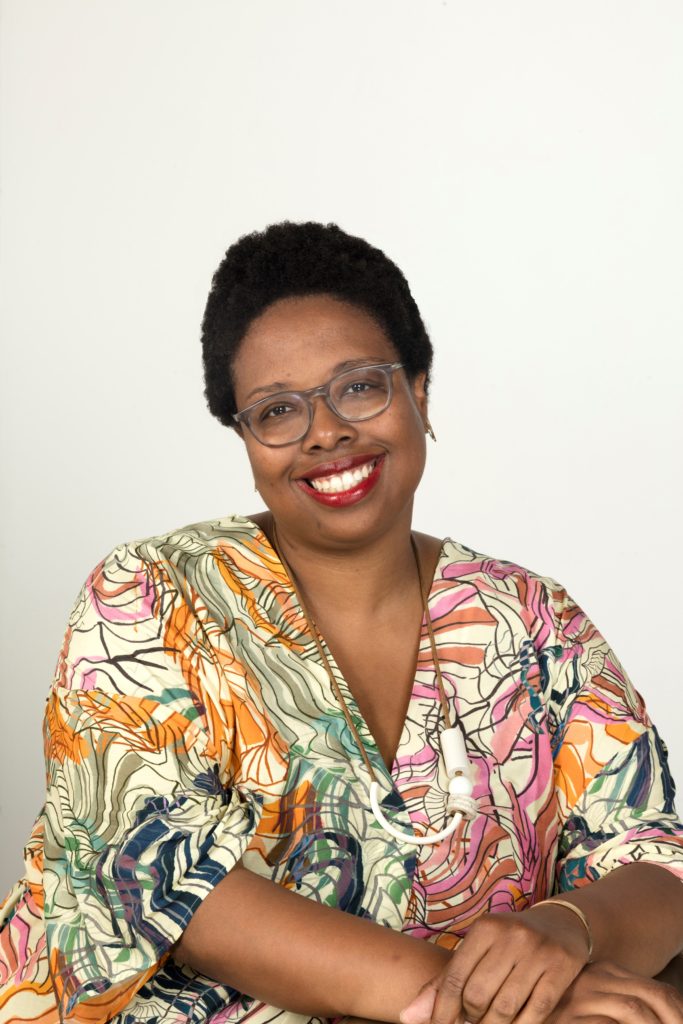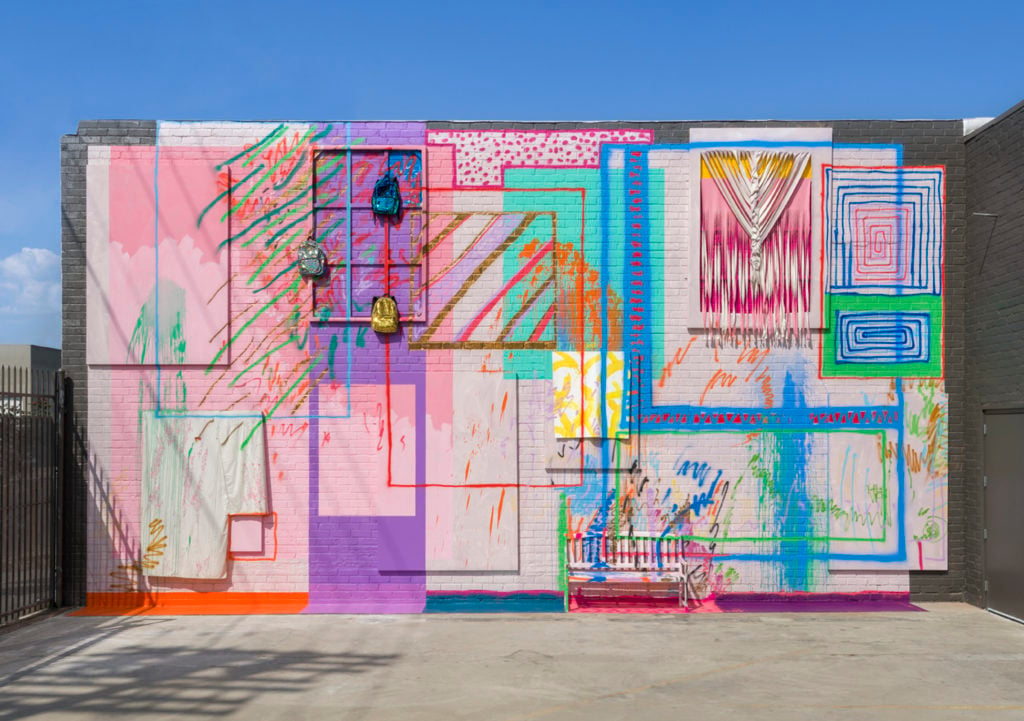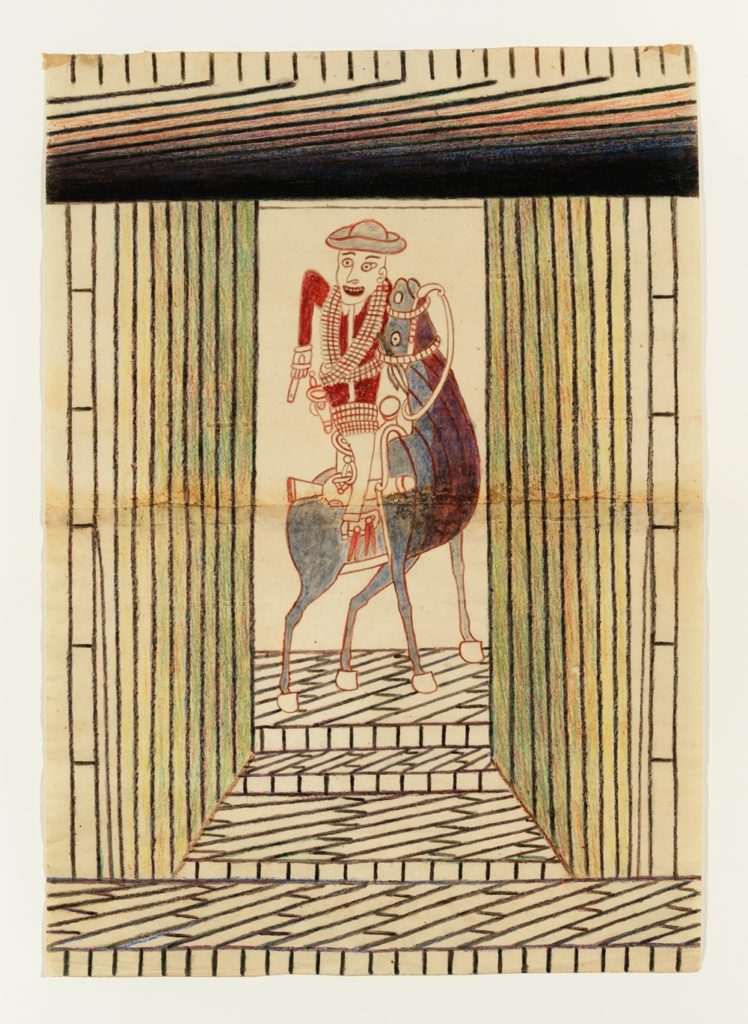On View
Star Curator Jamillah James on Why LA’s Artists Deserve More Attention From Museums
James has helped to relaunch the ICA LA with a new name, new look, and renewed curatorial focus.

James has helped to relaunch the ICA LA with a new name, new look, and renewed curatorial focus.

Janelle Zara

In a city with no fewer than four museums dedicated to contemporary art, one might assume that there would be plenty of opportunities for Los Angeles artists to show locally. But Jamillah James, the curator of the newly renamed Institute of Contemporary Art, Los Angeles, says that is not the case—though she has made it her mission to improve their odds.
“I don’t just want to invite artists outside the city to show in LA for the first time, but to provide opportunities and give love to artists that are here,” James—formerly an assistant curator at the Hammer and curatorial fellow at the Studio Museum in Harlem—told artnet News on a recent walkthrough of the museum’s new building.

Sarah Cain’s Now I’m going to tell you everything (2017), on the 7th Street courtyard wall at the ICA, Los Angeles. Photo: Jeff McLane, courtesy of the artist and ICA LA.
Previously known as the Santa Monica Museum of Art, the ICA LA reopens on Saturday in a former industrial factory in Downtown LA with a refined mission to shine a spotlight on overlooked talent. The admission-free, non-collecting museum was pushed out of its former Bergamot Station home by rising rents last year. Its new, 12,700-square-foot building has been refurbished by LA-based firm wHY Architecture; its new graphic identity, designed by artist Mark Bradford, is painted in a bold yellow on the facade.
The new location takes the museum outside the wealthy confines of Santa Monica and allows it to reach a new, more diverse audience. It also brings the institution closer to a growing concentration of cultural spaces clustered downtown, including MoCA, the Broad, the museum-like Hauser & Wirth, and the forthcoming Main Museum.

Martín Ramírez’s Untitled (Horse and Red Rider) (n.d.). ©2017 The Estate of Martín Ramírez, courtesy Ricco/Maresca Gallery, NY.
But in significant contrast to the procession of glossy Jeff Koons and Damien Hirst works that dominated the opening of the Broad in 2015, the ICA LA’s inaugural exhibition focuses on the meditative drawings of Mexican artist and migrant laborer Martín Ramírez. The artist, who spent 30 years in a California state psychiatric hospital after being diagnosed with schizophrenia, created the intricate, surreal works with matchsticks and other improvised media he could find while institutionalized. The show, part of the Getty’s Latin America-focused edition of Pacific Standard Time: LA/LA and organized by the ICA’s director Elsa Longhauser, includes a 17-foot-long scroll that has never before been shown publicly.

Martín Ramírez’s Untitled (Train and Tunnel) (c. 1960–63). ©2017 The Estate of Martín Ramírez, courtesy Ricco/Maresca Gallery, NY.
Although James, who joined the museum last year, will not organize any of its larger exhibitions until 2018, her fingerprints are already all over the project spaces. She invited Bronx-based artist Abigail DeVille to take over a smaller gallery with the installation No Space Hidden (Shelter) (2017). Underneath a punctured black tarp, cardboard boxes, bicycle wheels, and other found elements fill the space.
James says DeVille was a natural companion to Ramírez: “She has a similar use of improvisational materials, and her work examines themes of cultural invisibility and marginalization.”
As the sole curator on the museum’s tight-knit staff (although Longhauser also organizes exhibitions), James is the driving force behind its new institutional identity. In fall 2018, she and the California African American Museum will co-present her first major exhibition, a solo show of artist Nina Chanel Abney that originated at the Nasher Museum of Art at Duke University.
We spoke with James about her vision for ICA LA’s future, how she plans to keep it nimble, and why she hopes some people might end up there accidentally.
You mentioned that during early architectural planning, it was important to you that the museum include the project room where Abigail DeVille’s work is currently being shown. What kinds of curatorial opportunities does a space like that afford?
I’ve scheduled things through spring 2020 to get myself organized, but what’s really nice is that if there’s a project that I encounter that makes me think, “Ok, let’s do this,” it can go into the project room. This gives an opportunity to a young artist with a strong reputation like Abigail to show in a museum for the first time. As a curator who’s really committed to artists living and working today, it’s important to be respectful of their first solo museum exhibition and give them a significant amount of space.
There’s this idea that the new explosion of downtown museums will somehow be competing with each other, yet I hear from many LA artists that they haven’t been able to show in institutions here.
And those spaces are all overbooked by five or 10 years at a time. Not being tethered to a collection gives us an additional flexibility. I don’t envy artists; it is challenging to get the work out there at any stage. Institutional support is critical, and the role of the museum is to help the authoring of art history. If we can be another space in town to help LA-based artists to have these opportunities, I’m very much committed to it.
How does the ICA LA identity relate to its earlier incarnation as the Santa Monica Museum of Art?
We have the luxury of having an institutional history. The Santa Monica Museum was founded in 1984, and began operations in ‘89. We’re not coming into this landscape unknown. There is definitely a continuity—strong support of artists at different points in their careers who have an experimental impulse. It’s also [about] being super supportive of a diverse body of artists, not an occasional show of X amount of women or POC artists, but building a diverse program into the DNA of the institution and having that bear out in the staffing decisions.
Does the new architecture also play a role in shaping the museum’s identity?
This space is quite a bit bigger, and we have this outdoor space. The Sarah Cain installation on the wall outside is an extension of what’s happening in here, a visually intriguing invitation for the public coming down Seventh Street to come inside to investigate. Surprise! It’s a museum. And as a young person at MoMA PS1, I loved the way that they really put art everywhere—a boiler room of video works, works in vestibules and stairways, sound pieces in the bathrooms. Of course, we’ll be respectful of artists’ wishes. Not everyone is going to be down with having their work in the bathroom.
What does it mean for an institution to move from the West Side to the East Side? Is that indicative to a cultural shift in the city?
That’s hard for me to say, as someone who’s relatively new to LA. Maybe. There is a desire to codify little cultural centers, because [the city] is hard to navigate. At most, I get to see five shows a day, and I feel exhausted at the end after sitting in traffic. Galleries have slowly migrated east over the years. That energy comes from artists’ communities, and then commercial galleries sometimes follow suit. One of the things I love about this city is this spirit of collaboration. I have friends at every single institution. We’re all just doing the thing. We’re allowing more access to the public; we serve different publics, but there’s room for us to cross-pollinate and provide resources. That’s what makes this town really nice. And a really great place to work.